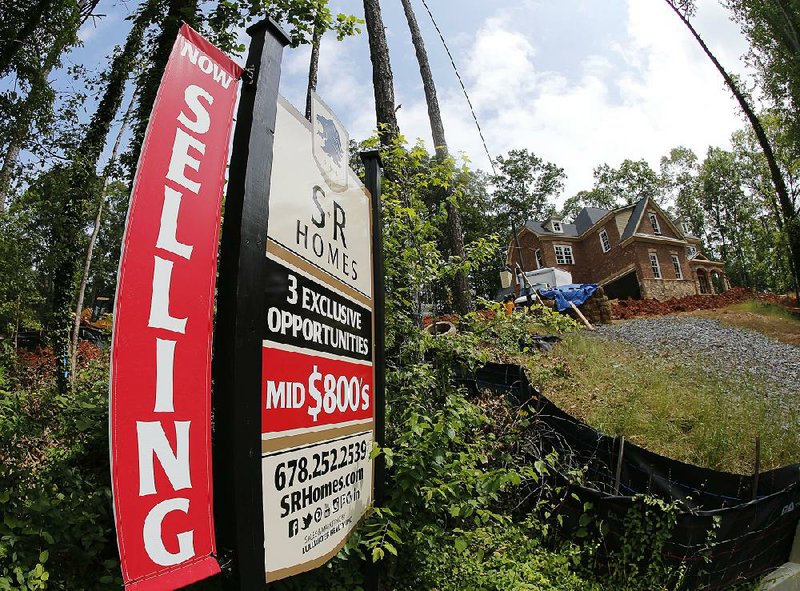WASHINGTON -- Home prices in 20 U.S. cities rose at a slower pace in May, keeping more properties within reach for prospective buyers.
The Standard & Poor's/Case-Shiller 20-city home price index climbed 4.9 percent in May from 12 months earlier, down slightly from a 5 percent pace in April, according to S&P Dow Jones Indices.
Home sales have jumped in recent months as an improving economy spurs new hiring and enables more people to afford a purchase. Yet the higher sales haven't encouraged more people to sell their homes, leaving supplies tight and driving up prices.
The price gains portray "a housing market that's growing quite healthily but isn't overheating," said David Sloan, a senior economist at 4Cast Inc. in New York.
Separate data released by the Census Bureau on Tuesday pointed to a limited impact of the 3-year-old housing recovery: The proportion of Americans owning their own homes has continued to decline and is now at the lowest level since 1967.
Still, prices are soaring higher in some cities, according to Case-Shiller: They rose 10 percent from a year ago in Denver, 9.7 percent in San Francisco and 8.4 percent in Dallas. Washington, D.C., posted the smallest increase at 1.3 percent. Prices rose in all 20 cities from a year earlier.
The Case-Shiller index covers roughly half of U.S. homes. The index measures prices compared with those in January 2000 and creates a three-month moving average.
Sales of previously owned homes increased 3.2 percent in June to a seasonally adjusted annual rate of 5.49 million, the National Association of Realtors said last week. That is the fastest pace since February 2007. Sales are up from an annual pace of just 4.8 million in January.
Some of the accelerated pace likely has been driven by higher mortgage rates and an expected decision by the Federal Reserve to start raising short-term interest rates this year. Most economists forecast that decision will come in September.
Yet the supply of available homes hasn't kept up with rising sales. The number of homes listed for sale rose 0.4 percent in the past year, the Realtors said, while sales have increased 9.6 percent.
That has led to aggressive efforts by buyers to grab homes: The typical property was on the market for just 34 days in June, down from 40 in May and the shortest time since the Realtors' group began tracking the data in May 2011.
The current pace of home sales is roughly what might be expected in a healthy housing market. Yet other data point to some ongoing weaknesses.
The percentage of homeowners continues to decline: Just 63.4 percent of Americans owned homes in the April-June quarter, down from 63.7 percent in the first three months of the year.
"We're still suffering the effects of the housing collapse and the financial crisis," said Mark Vitner, senior economist with Wells Fargo Securities in Charlotte, N.C. "We may have another percentage point to go before we see a bottom" in the homeownership rate, he said.
Meanwhile, more Americans are moving out on their own after doubling up with friends or living with their parents. That is a good sign for the economy because the creation of new households leads to purchases of more furniture, appliances and other goods.
But in the past year, all the new households have moved into rentals, the Census Bureau report shows.
Builders are ratcheting up the construction of apartments to keep up with the increased demand. But single-family home building remains lackluster. The pace of single-family home construction has risen 9.1 percent in the past year, while purchases of new homes have jumped at more than double that pace.
The proportion of home purchases from first-time buyers is also far below typical levels. First-time buyers create greater demand and enable current homeowners to trade up to larger homes.
Information for this article was contributed by Christopher S. Rugaber of The Associated Press and Victoria Stilwell, Jordan Yadoo and Kathleen M. Howley of Bloomberg News.
Business on 07/29/2015
